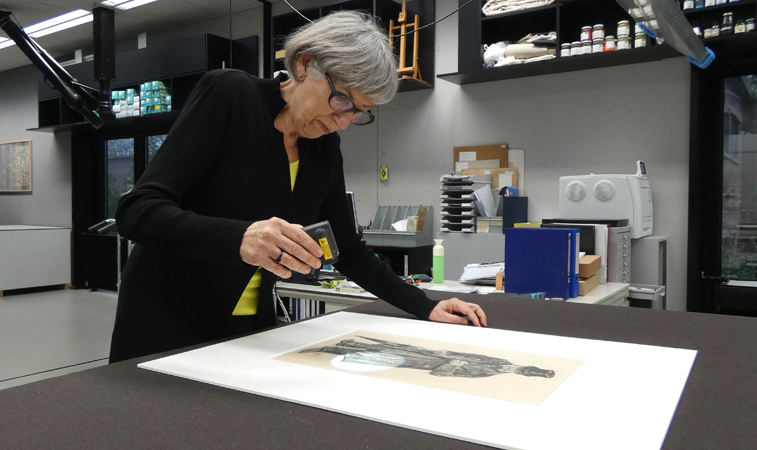
Bernadette views a drawing
Drawings in the (spot)light
Perhaps you have already noticed it: in almost every museum, works on paper are exhibited under limited light conditions (50 lux). This is because paper can discolour through excessive or prolonged exposure to light and also inks or paints used in the artwork can fade or lose their colour. This has been known for a long time. But I asked myself: which types of paper and drawing materials are the most sensitive to light? And how do things stand in this respect with the drawings from the Van Gogh collection of the Kröller-Müller Museum?
Down to the fibre
Under the microscope and on the light table we looked at the paper that Vincent van Gogh used for his drawings. Basically, a distinction can be made between paper that is built up out of thin, long white and transparent fibres (detail photo above) and shorter bark, hemp and grass fibres (detail photo below).
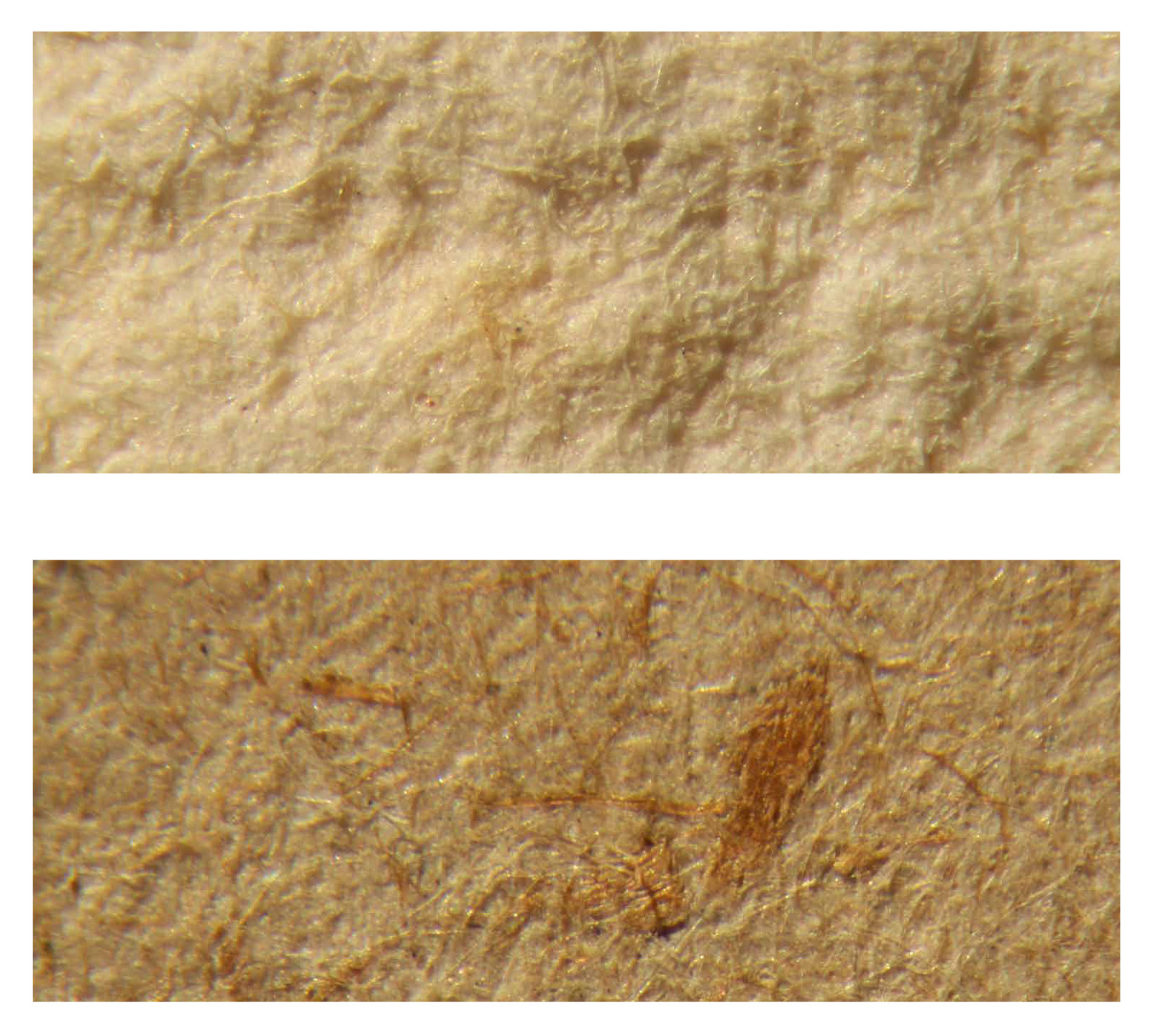
Detail photo long fibres (above), shorter fibres (below)
The latter paper type is usually of less good quality. Wood or plant fibres contain substances, such as for example lignin, which are very sensitive to light. Accordingly we saw that works on this paper type often showed much stronger degradation and that often clear damage from light could be seen. The works on paper with long transparent and white fibres were often still of excellent quality.
Dark and light edges
Van Gogh chose for his drawings not only white or cream-coloured paper, but also for example blue or grey paper. Below you can see an example of paper with light-blue fibres:
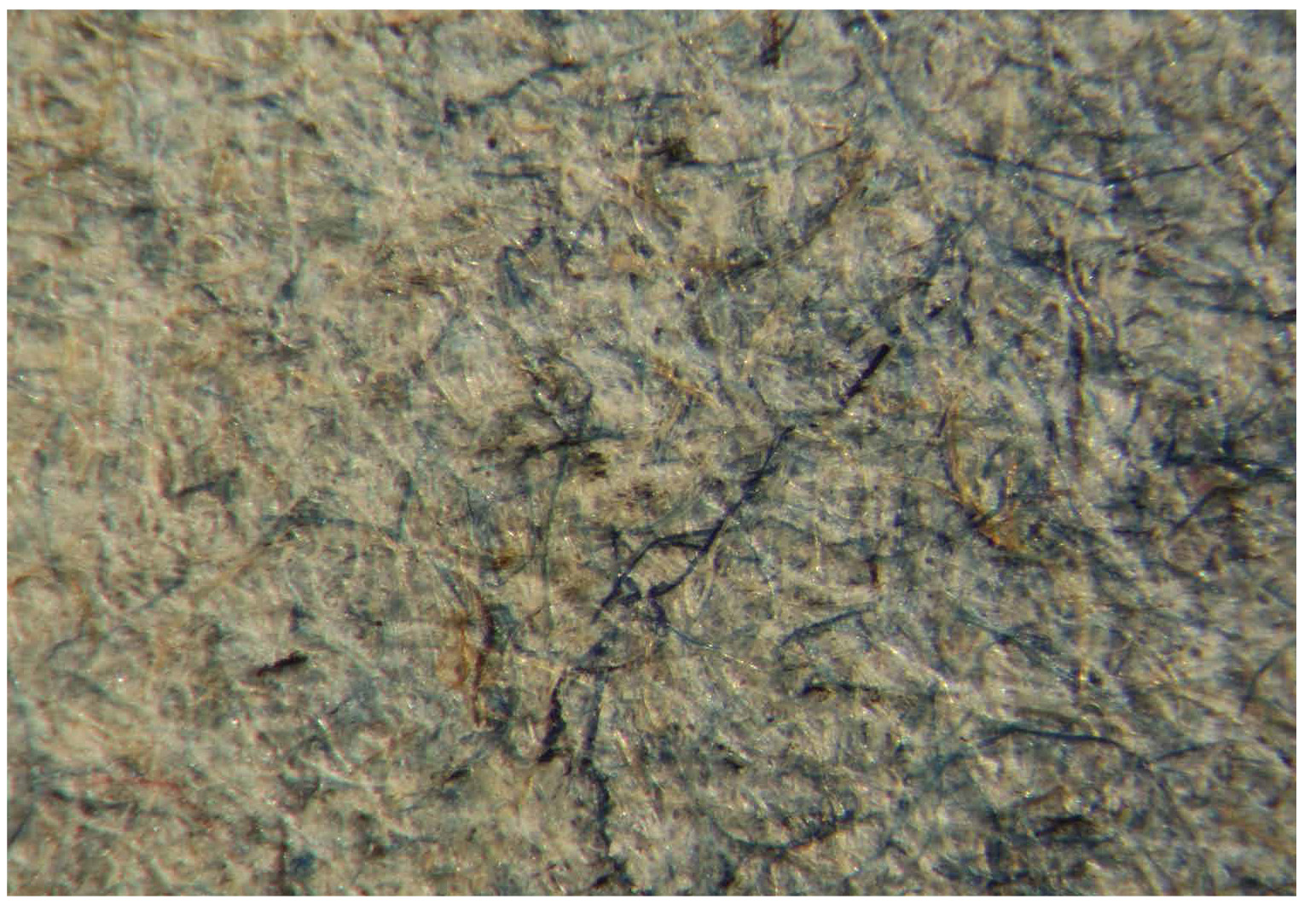
Detail light-blue fibres
These paper types have proven to be very sensitive to light. You can clearly see this on the following photo: the edge of the paper is darker than the middle section of the drawing. The edges were once covered by a passe-partout. The middle section has been exposed to light and is clearly lighter than the edges of the drawing.
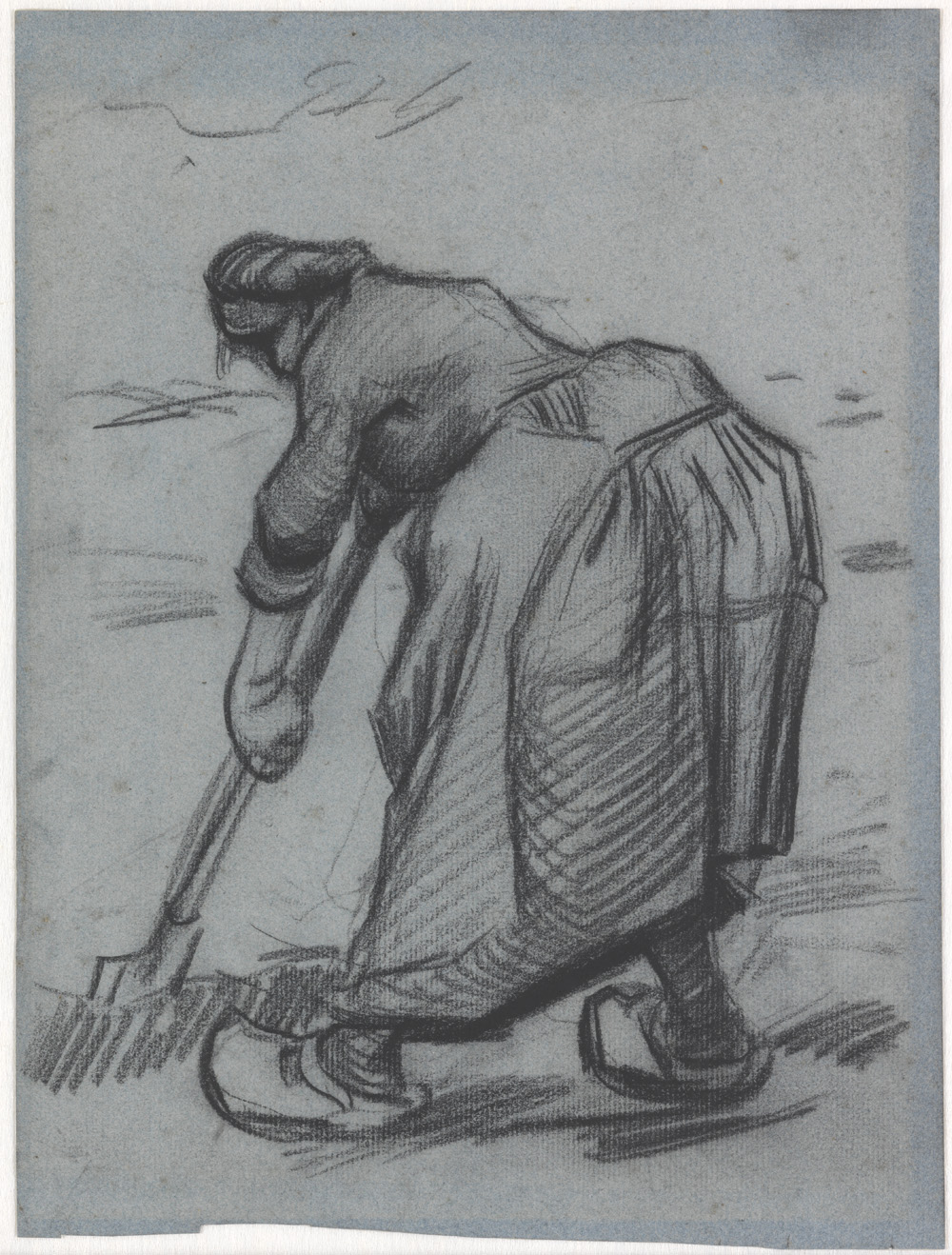
Vincent van Gogh, Woman digging, 1885
Sensitive materials
We now know which paper types are more or less sensitive to light, but what about drawing materials? Van Gogh used many different drawing materials: ink, chalk, pencil, charcoal, watercolours, oils and fixative. He sometimes used just one type, but he would also combine drawing materials in one drawing.
Brown and black inks
Ink was used in 61 drawings in our collection, of which 54 are works from the period before 1886, which was before Van Gogh left for France. On 50 drawings, the ink is brown in colour. Through past research or visible signs of specific damage (ink corrosion) we know that 22 of these drawings contain iron gall ink.
The composition of the other inks which are now brown is unknown. We do not know which colour the ink had originally. These can be brown, but also blue for example. These inks, just like iron gall inks, are not specifically sensitive to light, if they are applied in thick lines or surfaces. From past research we know that thin lines or surfaces, where there is little ink, are much more sensitive to light. Van Gogh also used black inks. These inks contain in all likelihood carbon particles. They are strong inks and are not sensitive to light.
Synthetic inks
After 1886 Van Gogh left for France and he started to experiment with synthetic inks. Based on previous research results, we can identify the typical light damage for these inks. This can be easily seen in the photo below. In the past, a conservator added two new pieces of paper into the drawing (circled in red). He coloured the pieces in with chalk. For this, he chose a colour which matched the colour of the ink at that moment. Because the ink has faded in time, there is now a difference in colour with the darker crayon lines.
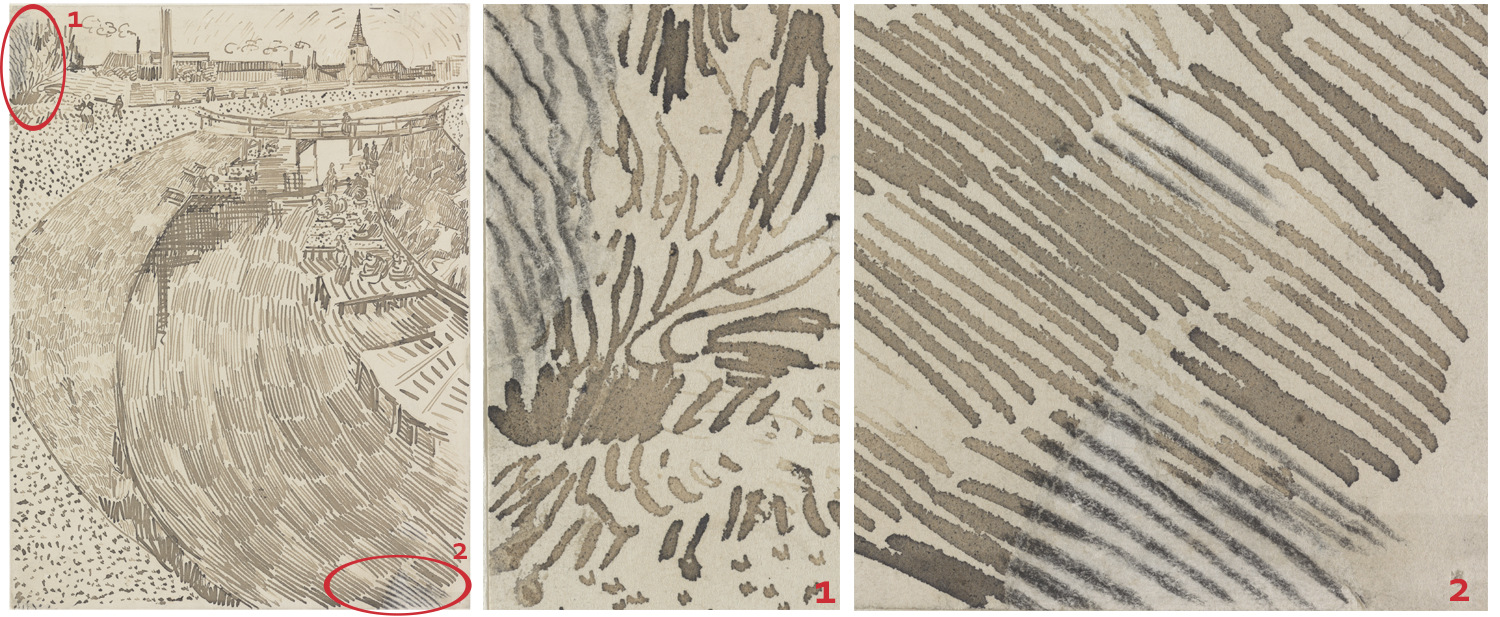
Vincent van Gogh, Laundry on 'La Roubine du Roi' canal', 1888
Conclusion
We therefore assume that the brown inks are only light-sensitive if applied in diluted form. This also applies to the washed chalk drawings or diluted watercolour drawings. Whenever there are transparent layers, the drawings are classified as more light-sensitive. The black inks are not light-sensitive, whereas the synthetic inks are very much so.
Light credit
Eventually we put the drawings of Van Gogh into 4 different classes, classified on the basis of light-sensitivity. Each class indicates an average number of hours in which a drawing can be exhibited in a year. This varies from 2 ½ weeks a year to 6 months. In this way a light credit is determined for each work. This classification is not only applicable for the Van Gogh collection but for all our works on paper. To future-proof and sustain the quality of the drawings, we adhere to the new light policy as much as possible. Fortunately we have a large collection of works on paper by Vincent van Gogh, so we are still able to show drawings regularly in the museum. 
Bernadette van Beek
Loans coordinator / conservator of works on paper,
February 2019
Now on display
Besides paintings, the Van Gogh Gallery also exhibits some 12 drawings by Vincent van Gogh in a regularly changing compilation.
